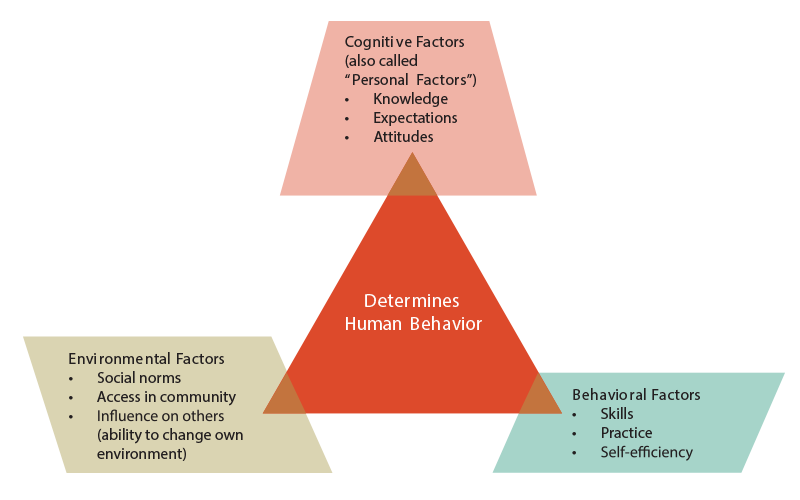+ 123 456 7890
Social Learning Theory
Social Learning Theory acknowledges the interaction that occurs between an individual and his/her environment.
The outside environment is where a person can observe an action, understand its consequences, and become motivated to repeat it and adopt it. Behavior is affected by structural factors, such as service availability and policies, as well as by social factors, such as social norms and peer influence.
In the application of the Social Learning Theory, the audience is encouraged to:
- Observe and imitate the behavior of others. For example, a mother may observe a friend verify medicine quality and is encouraged to do the same.
- See positive behaviors modeled and practiced. For example, a mother learns that her neighbor only gets ACTs from the government health facility, and has always gotten good quality medicine, this makes her want to do the same.
- Increase his/her own capability and confidence to implement new skills. For example, when a health worker shows a woman how to check the expiry date and look for the government seal on an ACT packet, she is more likely to know how to do this in future.
- Gain positive attitudes about implementing those skills. For example, when her husband praises her for carefully checking ACT packets before buying them, this makes the woman feel good about the practice and more likely to continue it.
- Experience support from his/her environment to use those skills. For example, a pharmacy displays a poster with the steps to verify medicine quality to encourage consumers to do so.
How Can the Social Learning Theory Be Applied?
The Social Learning Theory can be used to address behaviors that are heavily influenced by both the physical and social environment in which the individual lives. The theory highlights the importance of creating an enabling environment, in which the desired behavior change is made easier. It also argues that seeing the behavior in practice can help others adopt it. This can be done in person or through the media by real or fictional characters demonstrating the desired behavior, as well as the resulting benefits.



